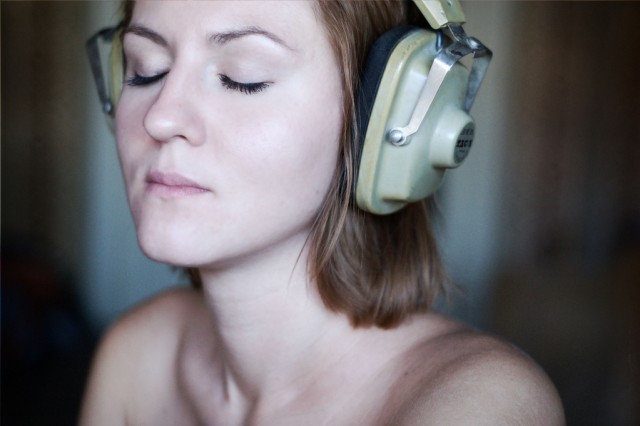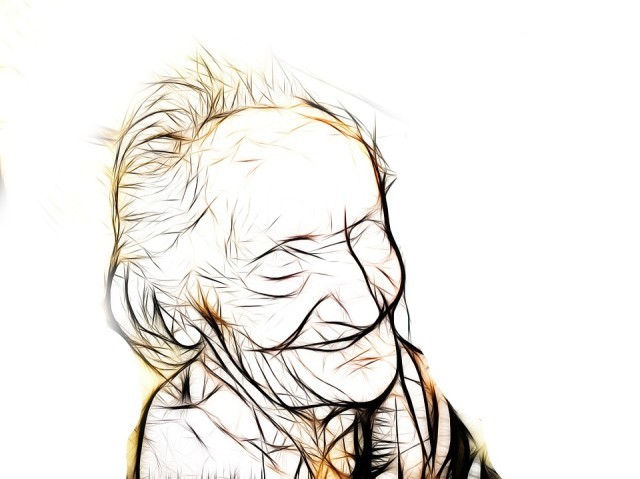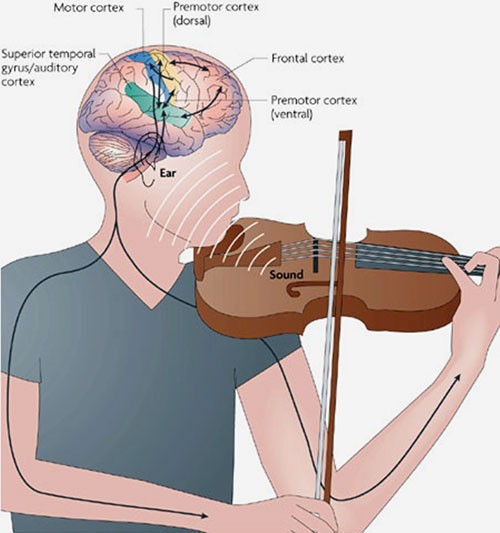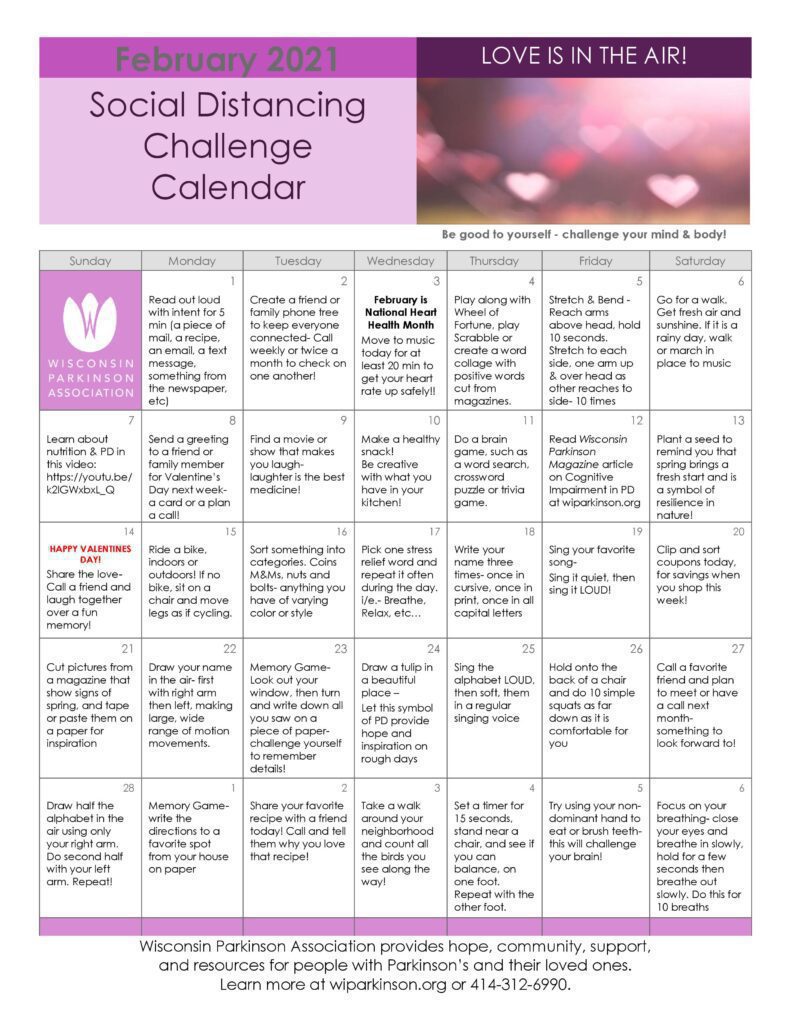Check out this activity calendar to keep yourself active and engaged this month!
LOL: Reduce Caregiver Stress with a Good Laugh
For family caregivers, the mountains of laundry, endless messes that must be cleaned up, constant doctor’s appointments, complete surrender of one’s personal life and the painful process of watching aging loved ones decline is no laughing matter. We usually feel like crying more often than we feel like laughing.
But many experts say that laughing in even the grimmest situations is good for both our mental and physical health. A case of the giggles can relieve stress and boost “happy chemistry” within the body. Most caregivers desperately need to decompress and lift their spirits, and one way to go about meeting these needs is to teach yourself how to laugh despite the challenges you face every day.
The Science Behind the Benefits of Laughter
Gelotology is the study of the psychological and physiological effects of laughter on the body. Numerous scientific studies in this field suggest that laughter is a powerful form of complementary medicine that yields the following benefits.
- Improved blood flow: William F. Fry, M.D., emeritus professor of psychiatry and behavioral sciences at Stanford University and pioneer of gelotology, and Michael Miller, M.D., cardiologist and professor at the University of Maryland School of Medicine, found that laughter causes the tissue that lines the insides of blood vessels to dilate or expand to increase blood flow to bodily tissues. This effect was so pronounced that it was similar to the increased blood flow caused by aerobic activity or statin therapy for lowering cholesterol.
- Strengthened immune responses: Research led by Lee S. Berk, DrPH, a medical researcher at Loma Linda University, has found that laughter has a positive effect on the immune system, including increased production of antibodies and activation of protective cells like T-cells and Natural Killer cells that fight viral infections and tumor cells.
- Reduced blood pressure: A study conducted in Japan showed that seniors attending adult day care experienced significant reductions in systolic blood pressure and heart rate following regular laughter therapy sessions.
- Increased pain relief: Researchers from Oxford University studied the effect of laughter on pain perception and found that “social laughter elevates pain thresholds both in the laboratory and under naturalistic conditions.” Endorphins released while laughing can have an opiate effect thereby increasing pain tolerance.
The benefits of laughter may be tied to human physiology. “Babies laugh long before they learn how to talk,” psychologist and laughter coach Annette Goodheart explains. “Laughing is a wonderful, cathartic process. I’ve worked with Auschwitz survivors who told me that the people who were able to laugh were the ones who survived.”
Laughter may seem like an inappropriate reaction to difficult scenarios, but just because you laugh doesn’t mean you don’t care or understand the gravity of a particular situation. Laughing in response to even the saddest circumstances helps you deal with your emotions rather than keeping them bottled up. Sometimes laughter may lead to tears, but Sebastien Gendry, renowned yoga instructor and CEO of the American School of Laughter Yoga, assures that’s perfectly normal. “You cannot open up a box of emotions selectively. A hearty bout of laughter may lead to a good cry, which is also cathartic. If you have unexpressed emotions, laughter may help bring them out.”
Life isn’t always funny, particularly when caring for loved ones who are chronically ill or dying. Laughter forces you to be at peace with who you are and where you are. No one has a perfect life. “Laughter therapy is about how you react in the face of adversity. Sometimes, you can’t control your circumstances, but you can always control your reaction. How you react is always negotiable,” Gendry says.
How to Laugh When You Don’t Feel Like It
To reap the benefits of laughter, you don’t even need to be happy or have a reason to laugh. Faking it works just fine. “The body cannot differentiate between fake and real laughter; you get the same physiological and psychological benefits,” Gendry explains. “We change physiologically when we laugh. We stretch muscles in our face and body, our pulse and blood pressure go up, and we breathe faster, which sends more oxygen to our tissues.”
The American School of Laughter Yoga recommends the following laughter exercises that caregivers can try at home. You can experiment with these exercises for 30 seconds or a few minutes at a time—whatever feels good to you.
- Gradient Laughter: Fake a smile, giggle and then laugh slowly. Gradually increase the tempo and volume of your laughter.
- Hearty Laughter: Spread your arms out beside you, look up and laugh heartily from deep down inside.
- I Don’t Know Why I Am Laughing: Laugh (faking it is perfectly fine) and shrug your shoulders as you look at yourself in a mirror. Use your eyes and body language to convey the message that you have no idea why you are laughing!
- Find Your Laughter Center: Probe your head with one finger as if looking for your laughter center. Imagine that each spot you push on triggers a different type of laughter and then act it out.
- Conductor Laughter: Imagine you are a conductor. Direct an imaginary orchestra with enthusiastic arm movements as you sing a song of your choice in laughter sounds only, such as “ho ho ho” or “ha ha ha.”
Join a Laughter Club
Since Dr. Madan Kataria, a family physician from Mumbai, India, launched the first Laughter Club in 1995, Laughter Yoga has become a global phenomenon. This type of yoga (also known as Hasyayoga) is a dual body/mind approach to health and wellness. Today, there are Laughter Clubs around the world where people come together to use unconditional laughter and yogic breathing (Pranayama) to relieve stress and promote health. There are more than 100 Laughter Clubs across the U.S. and most of them offer free weekly meetings. You can find a club near you by visiting the Laughter Yoga University website. There are also laughter sessions available via telephone and Skype that are perfect for busy caregivers to participate in.
Learn to Minimize Caregiver Stress
The reality is that stress will always be an unavoidable part of life. The only aspect you can control is how you choose to deal with the negativity and tension that you encounter. Laughter is a simple and free way to cope with life’s ups and downs.
Doctors Prescribing Music Therapy
Music has proven time and again to be an important component of human culture. From its ceremonial origin to modern medical usage for personal motivation, concentration, and shifting mood, music is a powerful balm for the human soul. Though traditional “music therapy” encompasses a specific set of practices, the broader use of music as a therapeutic tool can be seen nowadays as doctors are found recommending music for a wide variety of conditions.
1. Music Helps Control Blood Pressure and Heart-Related Disorders


According to The Cardiovascular Society of Great Britain, listening to certain music with a repetitive rhythm for least ten seconds can lead to a decrease in blood pressure and a reduced heart rate. Certain classical compositions, if matched with human body’s rhythm, can be therapeutically used to keep the heart under control. The Oxford University study states, “listening to music with a repeated 10-second rhythm coincided with a fall in blood pressure, reducing the heart rate” and thus can be used for overcoming hypertension.
2. Listening and Playing Music Helps Treat Stress and Depression


When it comes to the human brain, music is one of the best medicines. A study at McGill University in Canada revealed that listening to agreeable music encourages the production of beneficial brain chemicals, specifically the “feel good” hormone known as dopamine. Dopamine happens to be an integral part of brain’s pleasure-enhancing system. As a result, music leads to great feeling of joy and bliss.
It’s not only listening to music that has a positive effect on stress and depression. The Namm Foundation has compiled a comprehensive list of benefits of playing music, which includes reducing stress on both the emotional level and the molecular level. Additionally, studies have shown that adults who play music produce higher levels of Human Growth Hormone (HgH), which according to Web MD, is a necessary hormone for regulating body composition, body fluids, muscle and bone growth, sugar and fat metabolism, and possibly heart function.
For more on how music can be composed to benefit the brain, read about States of Consciousness and Brainwave Entrainment.
3. Music Therapy Helps Treat Alzheimer’s Disease


Music therapy has worked wonders on patients suffering from Alzheimer’s disease. With Alzheimer’s, people lose their capacity to have interactions and carry on with interactive communications. According to studies done in partnership with the Alzheimer’s Foundation of America, “When used appropriately, music can shift mood, manage stress-induced agitation, stimulate positive interactions, facilitate cognitive function, and coordinate motor movements.”
4. Studying Music Boosts Academic Achievement in High Schoolers


Early exposure to music increases the plasticity of brain helping to motivate the human brain’s capacity in such a way that it responds readily to learning, changing and growing. “UCLA professor James S. Catterall analyzed the academic achievement of 6,500 low-income students. He found that, by the time these students were in the 10th grade, 41.4% of those who had taken arts courses scored in the top half on standardized tests, contrasted with only 25% of those who had minimal arts experience. The arts students also were better readers and watched less television.” This goes to show that in the formative stages of life, kids who study music do much better in school.
5. Playing Guitar (and Other Instruments) Aids in Treating PTSD


The U.S. Department of Veterans Affairs shared a study in which veterans experiencing Post Traumatic Stress Disorder (PTSD) experienced relief by learning to play guitar. The organization responsible for providing guitars, Guitars For Vets “enhances the lives of ailing and injured military Veterans by providing them free guitars and music instruction.” Playing music for recovery from PTSD resembles traditional music therapy, in which patients are encouraged to make music as part of their healing process. Guitar is not the only instrument that can help PTSD. In fact, Operation We Are Here has an extensive list of Therapeutic Music Opportunities For Military Veterans.
6. Studying Music Boosts Brain Development in Young Children


A research-based study undertaken at the University of Liverpool in the field of neuroscience has light to shed on the beneficial effects of early exposure to music. According to the findings, even half an hour of musical training is sufficient to increase the flow of blood in the brain’s left hemisphere, resulting in higher levels of early childhood development.
The Portland Chamber Orchestra shares, “Playing a musical instrument involves multiple components of the central (brain and spinal cord) and peripheral (nerves outside the brain and spinal cord) nervous systems. As a musician plays an instrument, motor systems in the brain control both gross and fine movements needed to produce sound. The sound is processed by auditory circuitry, which in turn can adjust signaling by the motor control centers. In addition, sensory information from the fingers, hands and arms is sent to the brain for processing. If the musician is reading music, visual information is sent to the brain for processing and interpreting commands for the motor centers. And of course, the brain processes emotional responses to the music as well!”
7. Music Education Helps Children Improve Reading Skills


Journal Psychology of Music reports that “Children exposed to a multi-year program of music tuition involving training in increasingly complex rhythmic, tonal, and practical skills display superior cognitive performance in reading skills compared with their non-musically trained peers.” In the initial stages of learning and development, music arouses auditory, emotional, cognitive and visual responses in a child. Music also aids a child’s kinesthetic development. According to the research-supported evidence, a song facilitates language learning far more effectively than speech.
8. Listening To Music Helps Improve Sleep


According to The Center for Cardiovascular Disease in China, listening to music before and during sleep greatly aids people who suffer from chronic sleep disorders. This “music-assisted relaxation” can be used to treat both acute and chronic sleep disorders which include everything from stress and anxiety to insomnia.
9. Playing Didgeridoo Helps Treat Sleep Apnea


A study published in the British Medical Journal shows that people suffering from sleep apnea can find relief by practicing the Australian wind-instrument known as the didgeridoo. Patients who played the didgeridoo for an average of 30-minutes per day, 6 days per week, saw significant increases in their quality of sleep and decreases in daytime tiredness after a minimum period of 3-months of practice. Dr. Jordan Stern of BlueSleep says, “The treatment of sleep apnea is quite challenging because there is not a single treatment that works well for every patient. The didgeridoo has been used to treat sleep apnea and it has been shown to be effective in part because of strengthening of the pharyngeal muscles, which means the muscles of the throat, as well as the muscles of the tongue.”
Teen Scientist Working on Parkinson’s Treatment
In North Texas, bright young minds are hard at work and one in particular may be on the verge of shaping the future for patients with Parkinson’s disease.
At 14 years old, it seems there’s nothing Anushka Sridhar hasn’t done.
“Outside of school, I play volleyball, basketball, I’m a third-degree black belt in taekwondo. I do an Indian cultural dance and I’m also part of Destination Imagination,” the Plano ISD 8th grader said.
Sridhar is also a budding scientist, who won the grand prize in her school’s science fair.
She created a device designed to lessen the tremors experienced by Parkinson’s patients.
“My great aunt passed away. With her tremors though, she had a lot of difficulties just with daily activity,” Sridhar said. “So that sparked an idea for me to try and create like a wrist band that could mitigate the tremors.”
For two months, she dove head first into researching Parkinson’s disease, a neurological disorder that causes hand tremors and imbalance.
She learned about how vibration therapy can help the motor skills of Parkinson’s patients.
The idea is the vibrations fool the brain and distract it from the physical sensation of tremors so that patients have an easier time writing.
It’s a well-known theory that even the goliaths of the industry, like Microsoft, are looking into.
Sridhar used common materials, like velcro and simple curcuits to create a prototype wristband. She reached out to the Dallas Area Parkinsonism Society, or DAPS, for test subjects willing to strap on her homemade wristband.
“They were excited that a young person would take that kind iof interest. You can’t help but be impressed when you hear her,” DAPS Executive Director Mike Miles said.
The partnership blossomed, and Sridhar connected with people five times her age. Each one seem impressed with the device, that not only worked, but gave them hope!
“I’m sure she will study that and improve on it and one day, we will have a device that we could put on and write normally,” said 81-year-old Ryan Wagner of Plano.
Sridhar said she planned to expand her research and build more prototypes of her wristband.
She hopes to one day affect the lives of every Parkinson’s patient.
She now advances to the Plano ISD district fair and the Dallas regional science fair.
“Poor Me”? Or “Lucky Me!”
Laurie Prochnow is a recruiter and a business owner in Wausau. She was diagnosed with Parkinson’s 6 years ago, and she launched a PD Support Group in Wausau in early 2019.
Together with her company, Management Recruiters, Laurie put together a couple of great videos sharing some of the lessons she has learned over the last several years of having Parkinson’s.
‘It is not hopeless’: Parkinson’s disease doesn’t stop Austin duo from making popular art
One day, Verna Earl Hamilton Grice discovered she could not walk up the driveway.
That was the first sign.
Later, she felt tremors on one side of her body.
Ten years ago, she was diagnosed with Parkinson’s disease.
That’s when she stopped painting.
“I got tired,” Verna, 88, says. “I didn’t do it for 10 years. It’s labor intensive. Susan kept on.”
That would be her daughter Susan Grice, 63, who shares Verna’s zeal for making art.
“She focused instead on trying to figure out the illness,” Susan says of her mother. “She went to support groups such as Power for Parkinson’s. They promote exercise.”
Verna: “I was just hanging on.”
Verna, a native of Lake Charles, La., nevertheless made significant progress. A return to painting has helped.
Susan: “Her doctor says she is in the top 1 percent of his patients.”
“I walk really well,” Verna says with a laugh. “If you walk well, they think you are OK. I have my ups and downs. My ups are longer than they were, because I am so busy painting these days. Just looking at the paint seems to help.”
In their airy home studio, Verna and Susan paint together on wood. They seal the paintings so they can be hung outdoors. Their subjects include images inspired by Old Masters, original ideas, nature and abstract arrangements.
As in the past, the mother-and-daughter team enjoys a steady demand for their output, which could be called garden art. They recently staged an exhibition that attracted more than 60 guests to their house and garden in Westover Hills.
“It makes me feel better, I noticed,” Verna says. “How did I start again? My dentist was going out of his way to be sweet to me — I hate going to the dentist — so I brought him one of my pictures. He loved the picture. He had to have two more. They hang in the dentist’s office for others to enjoy.”
“She came home and said, ‘Oh no. I’ve got to get painting. We’re back in business,’” Susan says. “Since then, we couldn’t stop.”
The Grice method
Susan and Verna make 24-by-24-inch paintings on 3/4-inch exterior plywood.
“It’s done directly on the wood,” Verna says. “We prime it and then seal it several times after painting.”
“It’s like making signs,” Susan says. “They last for years and years. We don’t tell the exact formula. It’s a secret. A carpenter friend makes the frames of cedar.”
Mother and daughter come to the project with similar artistic sensibilities.
Susan, former director of psychiatric nursing at Seton Shoal Creek, studied at the Glassell School of Art, the teaching institute of Houston’s Museum of Fine Arts.
As for Verna, she was artistic as a child in Louisiana. She painted a bit in high school. She followed that inclination to Mexico City, where she studied Spanish and art in 1948 and ’49.
“Diego Rivera and Frida Kahlo were very much around,” Verna says. “I remember seeing Diego’s mural at a hotel there.”
A child of the Depression, Verna did not expect much more from life than hard work.
Her father, Vernon Earl Hamilton, took whatever jobs he could land.
“I never knew what to say when they asked, ‘What does your Daddy do?’” Verna recalls. “There were so many things, since it was the Depression. I know he owned slot machines on the side. He put them in little bars around Lake Charles. He sold one to let me go to Mexico.”
Her mother, Ruth McLaughlin Grice, worked as a bookkeeper for an ice company.
“She went to work to get me braces,” Verna says. “Guess what? She was working till she retired. I never got my braces.”
Verna has one sister, Helen Ruth Garman, who at age 84 is a Ride Austin contract driver.
Even Verna’s Mexican adventure came with a practical work goal.
“I was hoping to get a job using my Spanish,” she says, “but couldn’t find one. So I worked for a construction company for a while, then went to Houston. That’s where I met my husband, a young lawyer named Harrison Marion Grice.”
The newlyweds settled down in southeastern Houston and raised three children: Susan, 63, Charles, 61, and Laurel, 54.
Verna did not stop working.
“I sold real estate for a while,” she says. “I was a bilingual secretary in Spain after my husband died and also a legal secretary. I worked for the National Treasury Employees Union and lived in Washington for eight years. I was marching with the union when the older President Bush tried to freeze employees’ salaries to pay down the national debt. I was arrested and handcuffed, stuffed into a paddy wagon and taken to jail. The one thing I remember is that the toilet in the jail is right out in the middle of the room. That’s punishment enough.”
The family moved to Austin’s Northwest Hills in Austin in 1975. She retired in 1996 as the assistant to her union’s president and purchased the Westover Hills home in 2001.
Why paint?
“I just got in the mood,” Verna says of her first adult painting 15 years ago. “I got bored with looking out at those bare fences around the patio. They needed some color. That’s when we started making groups of paintings.”
Susan started painting and selling art right after Verna started in 2004. They’ve sold more than 100 paintings, many of them at places that also sell architectural pieces or items for the garden.
Verna finds that Parkinson’s is only a partial barrier.
“With just about any disability, you can still paint,” Verna says. “If you find someone to help on some things, you can still enjoy the magic of painting.”
“You let me draw straight lines for you sometimes,” Susan interjects. “With her permission and very specific instructions, she will direct me to draw a line. It allows her to still paint, which is fantastic.”
Both Grices promote Power for Parkinson’s, the nonprofit support group that offers free exercise, dance and singing classes at locations in Austin, Round Rock, West Lake Hills and Lakeway.
“I started going when there were just a few things we could do there, and now there are hundreds of activities,” Verna says. “I swim laps. I play bocce ball. I boxed. I decided my body is not made for boxing. Age 88 is too old to dive into the mat.”
Verna does not paint to inspire others, but she’s gratified it might do so.
“I just want people to know that, at 88, you can still have some fun and enjoy life,” Verna says. “A lot of people with Parkinson’s think that this is the end. But you can slow it down. You realize how important your brain is. Don’t get me wrong. It’s a bear of a disease. But it is not hopeless. There are lots of things you can do. Do it, try it — and get creative with it.”
Scientists identify early signs of Parkinson’s disease years before symptoms develop
Scientists at King’s College London have identified the earliest signs of Parkinson’s disease in the brain up to 20 years before patients present with any symptoms. The findings challenge what had so far been understood about the disease and could lead to new screening tools for identifying high-risk patients and new treatment approaches, although larger studies and more affordable scans would be needed first.
Brain scans of high-risk patients showed a loss of serotonin function before movement disorders developed. The serotonin system regulates mood, sleep and movement.
Parkinson’s is the second most common neurological condition and affects about 145,000 people in the UK. The main symptoms are movement problems such as shaking and tremors, cognitive disorders, depression, and difficulty sleeping, but the disease is known to establish itself in the brain long before symptoms appear and a diagnosis is made.
Studying the early stages of the disease to find treatment approaches with the potential to slow progression represents a huge challenge to researchers, who have so far linked the condition to reduced dopamine levels in the brain. Although no cure for the disease exists, current treatments are focused on controlling symptoms by restoring dopamine levels.
However, the current study shows that changes in the neurotransmitter serotonin occur very early in Parkinson’s disease. These changes could serve as an important early warning signal that a person is at risk.
Serotonin transporter proteins are the first to change in Parkinson’s disease
For the study, Politis and colleagues scanned the brains of 14 people in their 20s and 30s who have a rare genetic disorder that means they are almost certain to develop Parkinson’s once they reach their late forties or fifties.
Parkinson’s disease is characterized by a build-up of the protein α-synuclein in the brain. While the cause of this protein accumulation is usually unclear, genetic mutations are known to cause the problem in a minority of cases.
The subjects, who were all from remote villages in Greece and Italy, have rare autosomal dominant point mutations A53T in the α-synuclein (SNCA) gene. The SNCA mutation originates in villages located in the northern Peloponnese in Greece and is also found in people who moved to nearby areas in Italy.
Half the subjects had already been diagnosed with Parkinson’s, while the other half had not yet displayed any symptoms, making the group perfect for analyzing how the disease progresses.
“Given the known neurochemical changes in the serotonergic system and their association with symptoms of Parkinson’s disease, we hypothesised that carriers of the A53T SNCA mutation might show abnormalities in the serotonergic neurotransmitter system before the diagnosis of Parkinson’s disease, and that this pathology might be associated with measures of Parkinson’s burden,” write the team in the journal Lancet Neurology.
After flying the 14 participants to London for brain imaging and clinical assessment, Politis and team compared the subjects’ data with 65 patients with Parkinson’s disease of a non-genetic cause and 25 healthy individuals.
They found that the people who were destined to develop Parkinson’s had sharply reduced levels of serotonin, which controls many brain functions including mood, cognition, movement, wellbeing and even appetite.
The serotonin system started to malfunction in the subjects with Parkinson’s long before symptoms such as movement problems started to appear and before abnormalities in the dopamine system arose.
“Our findings provide evidence that molecular imaging of serotonin transporters could be used to visualize premotor pathology of Parkinson’s disease in vivo,” writes the team.
Further research ‘could change countless lives’
The brain scans took the form of PET scans, which are difficult to perform and expensive and the researchers say that further work to develop the technique is needed to make the imaging method simpler to carry out and more affordable for use as a screening tool.
Professor of medical imaging at University College London, Derek Hill, says that although the study provides valuable insights, it also has some limitations.
He points out that the results may not scale up to larger studies and that the highly specialised imaging method is limited to a very small number of research centers so could not yet be used to help diagnose patients or evaluate candidate treatments in large studies.
However, the research does suggest that trying to treat Parkinson’s at the earliest possible disease stage is likely to be the best approach to preventing the rising number of people whose lives are destroyed by this hideous disease, says Hill.
Research manager at the charity Parkinson’s UK, Dr Beckie Port, concludes: “Further research is needed to fully understand the importance of this discovery – but if it is able to unlock a tool to measure and monitor how Parkinson’s develops, it could change countless lives.”
Do You Know How Lucky You Are?
While my grandkids were here last week, we read books every night before bed. And, of course, each night at least one book had to be by Dr. Seuss. The night before they left, we read “Did I Ever Tell You How Lucky You Are?“
It starts out by offering some rather sound advice:
“When you think things are bad,
when you feel sour and blue,
when you start to get mad …
you should do what I do!
Just tell yourself, Duckie,
you’re really quite lucky!
Some people are much more …
oh ever so much more …
oh, muchly much-much more
unlucky than you!”
Of course, Dr. Seuss then spends the rest of the book expounding on all the different ways the reader is lucky as a ducky.
Most people would agree that having been handed a diagnosis of Parkinson’s disease is anything but lucky. In fact, it can be downright scary. Even so, there are things to be thankful for. Things that cause you to pause and say, “I am so lucky” or “I am so blessed.” Things that take your mind off the unknown. Things that give you hope.
Today, I fell
I was puttering in my yard, trying to eradicate the wounded and the dead and replace them with the new. I stepped down on the shovel to finish digging the hole for a salvia plant, and I lost my balance.
It seemed as if I was falling in slow motion.
On the way down, all I could think of was hitting my head on one of the rocks that line the pathway. Some of them are sharp. I fell hard on my arm and then, with a rocking motion, came to a halt, my head never touching the ground. I waited a minute to assess the damage before trying to get up. No pain. No scratches. I was lucky. I was blessed. Given what could have been a terrible accident (considering the DBS wires tucked in my brain), I was indeed blessed.
Life is so beautiful
I went over to my grandson’s house yesterday to help him and his mom weed their backyard. When we had finished, he began yelling for his mom and me to “Come here. Quick! Come here!” He was jumping up and down (literally) with such joy on his face that I was certain he’d found a bug he’d never seen before. (Or perhaps George, “his” praying mantis, had shown up again.)
I approached where he stood, next to a small, bushy plant. He looked at the plant — a weed, by most standards — and with great excitement exclaimed, “It’s so beautiful!”
It was a smallish plant with little yellow flowers scattered here and there. To him, it was so beautiful.
Oh, how lucky I’d be if I could see the world through the eyes of a child. But wait! I did!
Oh, how lucky I am!
“Thank goodness for all of the things you are not!
Thank goodness you are not something someone forgot,
and left all alone in some punkerish place
like a rusty tin coat hanger hanging in space.” —Dr. Seuss



Recent Comments